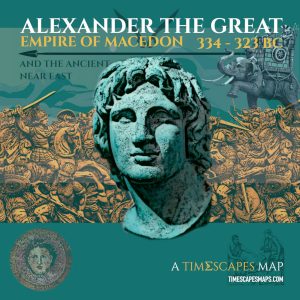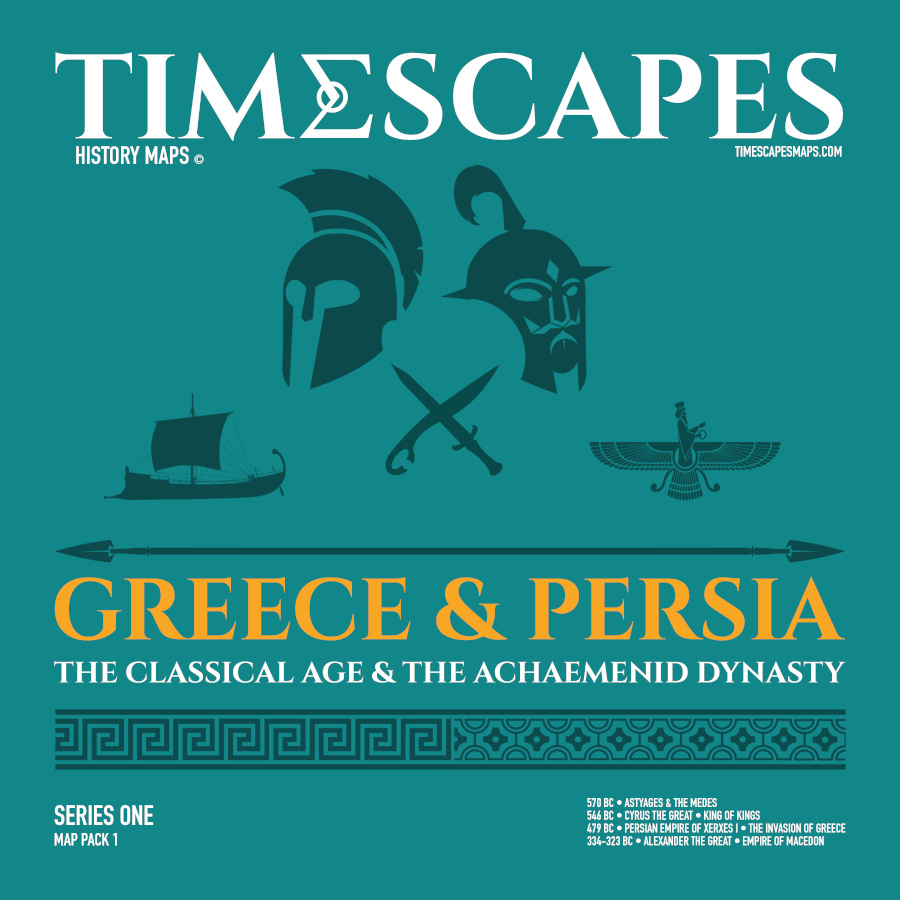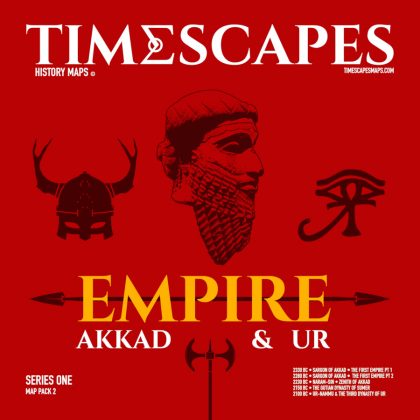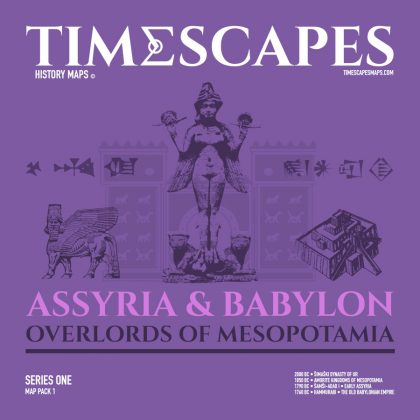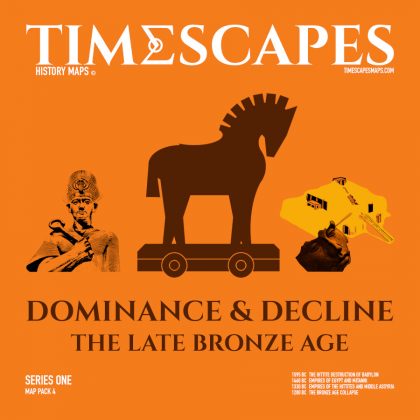
TIMESCAPES MAP PACK 6 – GREECE AND PERSIA
The political map of the ancient Near East looked very different after the fall of Assyria: ambitious rulers such as Astyages of the Medes and Nebuchadnezzar II of Babylon moved into the vacuum left by the fleeing Assyrians. Having collaborated in the downfall of their previous overlords, these two nations now ruled over enormous territories: Babylon held sway over all Mesopotamia, an empire which dwarfed even that of Hammurabi, its most celebrated king; the kingdom of the Medes now reached from central Asia to eastern Anatolia. But none of these mighty empires would last long: two nations were rising whose titanic power-struggle would dominate the next three hundred years: Greece and Persia.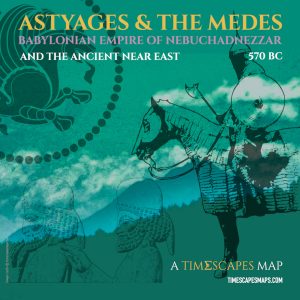
TIMESCAPES MAP PACK 6 – GREECE AND PERSIA
570 BC: ASTYAGES & THE MEDES / BABYLONIAN EMPIRE OF NEBUCHADNEZZAR II
In the early 6th century BC, four great superpowers held sway over the ancient Near East: Saiite Egypt, whose eastern border had reverted to the Sinai after its thwarted attempts at expansion into Syria and its failed alliance with the remnants of the Assyrian court; the Lydian empire of Alyattes (later to be inherited by his son Croesus), which united the previously disparate states of western Anatolia; the mighty empire of Babylonia under Nebuchadnezzar II, which encompassed the entirety of Mesopotamia, the Syro-Hittite kingdoms and the Levant; and the vast territory commanded by the Medes, one of the most enigmatic cultures of the ancient world. Given their nomadic roots, many scholars have questioned the existence of a Median ‘empireʼ as such; there is little doubt however that the Medes exerted a tremendous influence over the Near East in the 7th and 6th centuries BC: their destruction of Nineveh was responsible for breaking the back of the Assyrian empire and their king Cyaxares dealt the final killing blow to Assyria at the battle of Karkemiš; from their previous lands on the Iranian plateau the Medes eventually pushed as far west as Lydia, occupying almost all the territories of the Zagros mountains and large parts of the southern shores of the Black and Caspian Seas.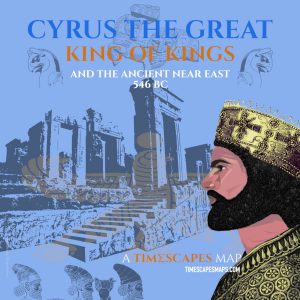
TIMESCAPES MAP PACK 6 – GREECE AND PERSIA
546 BC: CYRUS THE GREAT
Cyrus II of Persia (reigned 559–530 BC) is generally regarded as one of the greatest (if not the greatest, in ideological terms) of all the Persian kings and certainly of the Achaemenid Empire, which he formally established upon completing the conquest of three of his four main superpower rivals in the Near East (Media, Lydia and Babylonia). By many accounts, his spectacular life and reign came to a catastrophic end in 530 BC when Cyrus was killed in battle as the Persian armies attempted the conquest of the Massagetae, a Scythian tribe commanded by the warrior queen Tomyris.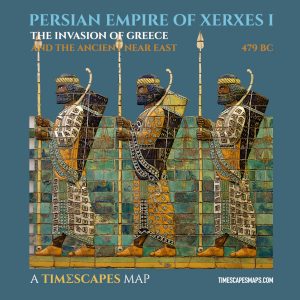
TIMESCAPES MAP PACK 6 – GREECE AND PERSIA
479 BC: PERSIAN EMPIRE OF XERXES I / RISE OF THE GREEK CITY-STATES
Of all the Persian kings, the name of Xerxes I looms large due to his attempt to invade Greece in 480 BC, a power play that has resonated throughout western history as the moment when the culture of the West (what we would regard these days as Western Europe) was almost breached by that of the East (i.e the cultures united by the Iranic Persian empire). Xerxes crossed the Hellespont in 480 BC and moved down through eastern Greece until his army was halted by the Spartans of Leonidas at the famous battle of Thermopylae. The Spartan stand, however, merely delayed the Persian invasion, which resumed with the capture of Athens. Persian occupation of Greece looked likely until, against the advice of his admirals, Xerxes launched a massive naval attack, resulting in a conclusive victory for the Greek naval forces at the battle of Salamis in 479 BC. Perhaps it was a rebellion in Babylon, Xerxesʼ capital, that ultimately saved the Greeks: Xerxes was recalled to Babylon, leaving his general Mardonius to complete the conquest of the Greek mainland. But at the Battle of Plataea in 478 BC, the Persian armies were crushed, ending the dream of the conquest of Greece.